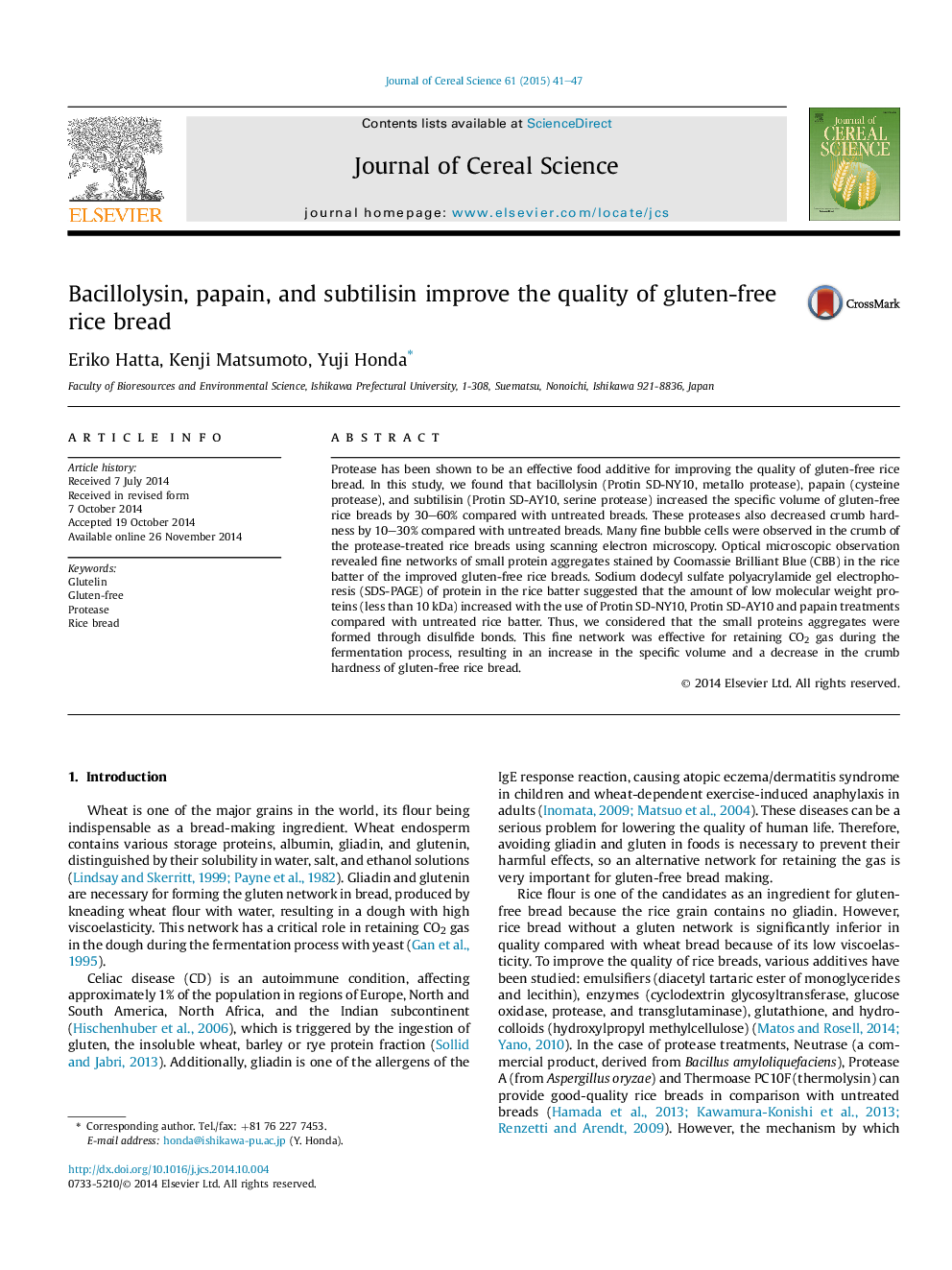| Article ID | Journal | Published Year | Pages | File Type |
|---|---|---|---|---|
| 4515698 | Journal of Cereal Science | 2015 | 7 Pages |
•Commercial proteases improved quality of gluten-free rice bread.•Hydrolysis of glutelin subunits (α- or β-) was necessary to improve rice bread.•Fine networks of small protein aggregates were observed in the improved rice batters.•Specific volume of breads increased during fermentation and baking.
Protease has been shown to be an effective food additive for improving the quality of gluten-free rice bread. In this study, we found that bacillolysin (Protin SD-NY10, metallo protease), papain (cysteine protease), and subtilisin (Protin SD-AY10, serine protease) increased the specific volume of gluten-free rice breads by 30–60% compared with untreated breads. These proteases also decreased crumb hardness by 10–30% compared with untreated breads. Many fine bubble cells were observed in the crumb of the protease-treated rice breads using scanning electron microscopy. Optical microscopic observation revealed fine networks of small protein aggregates stained by Coomassie Brilliant Blue (CBB) in the rice batter of the improved gluten-free rice breads. Sodium dodecyl sulfate polyacrylamide gel electrophoresis (SDS-PAGE) of protein in the rice batter suggested that the amount of low molecular weight proteins (less than 10 kDa) increased with the use of Protin SD-NY10, Protin SD-AY10 and papain treatments compared with untreated rice batter. Thus, we considered that the small proteins aggregates were formed through disulfide bonds. This fine network was effective for retaining CO2 gas during the fermentation process, resulting in an increase in the specific volume and a decrease in the crumb hardness of gluten-free rice bread.
